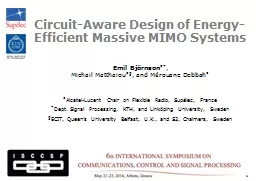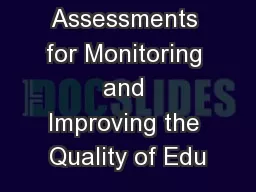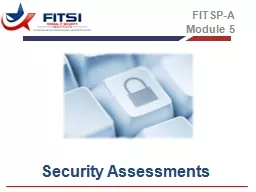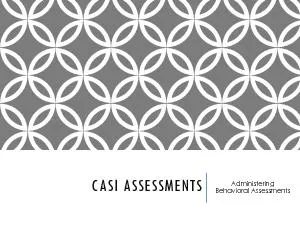PPT-MASSIVE APPLICATION OF ONLINE ASSESSMENTS
Author : missroach | Published Date : 2020-07-03
Espinosa Díaz Yessica Figueroa Rochín Claudia Araceli Perezchica Vega José Eduardo Sepúlveda Rodríguez Jesuán Adalberto Collegiate Examinations The Universidad
Presentation Embed Code
Download Presentation
Download Presentation The PPT/PDF document "MASSIVE APPLICATION OF ONLINE ASSESSMENT..." is the property of its rightful owner. Permission is granted to download and print the materials on this website for personal, non-commercial use only, and to display it on your personal computer provided you do not modify the materials and that you retain all copyright notices contained in the materials. By downloading content from our website, you accept the terms of this agreement.
MASSIVE APPLICATION OF ONLINE ASSESSMENTS: Transcript
Download Rules Of Document
"MASSIVE APPLICATION OF ONLINE ASSESSMENTS"The content belongs to its owner. You may download and print it for personal use, without modification, and keep all copyright notices. By downloading, you agree to these terms.
Related Documents














